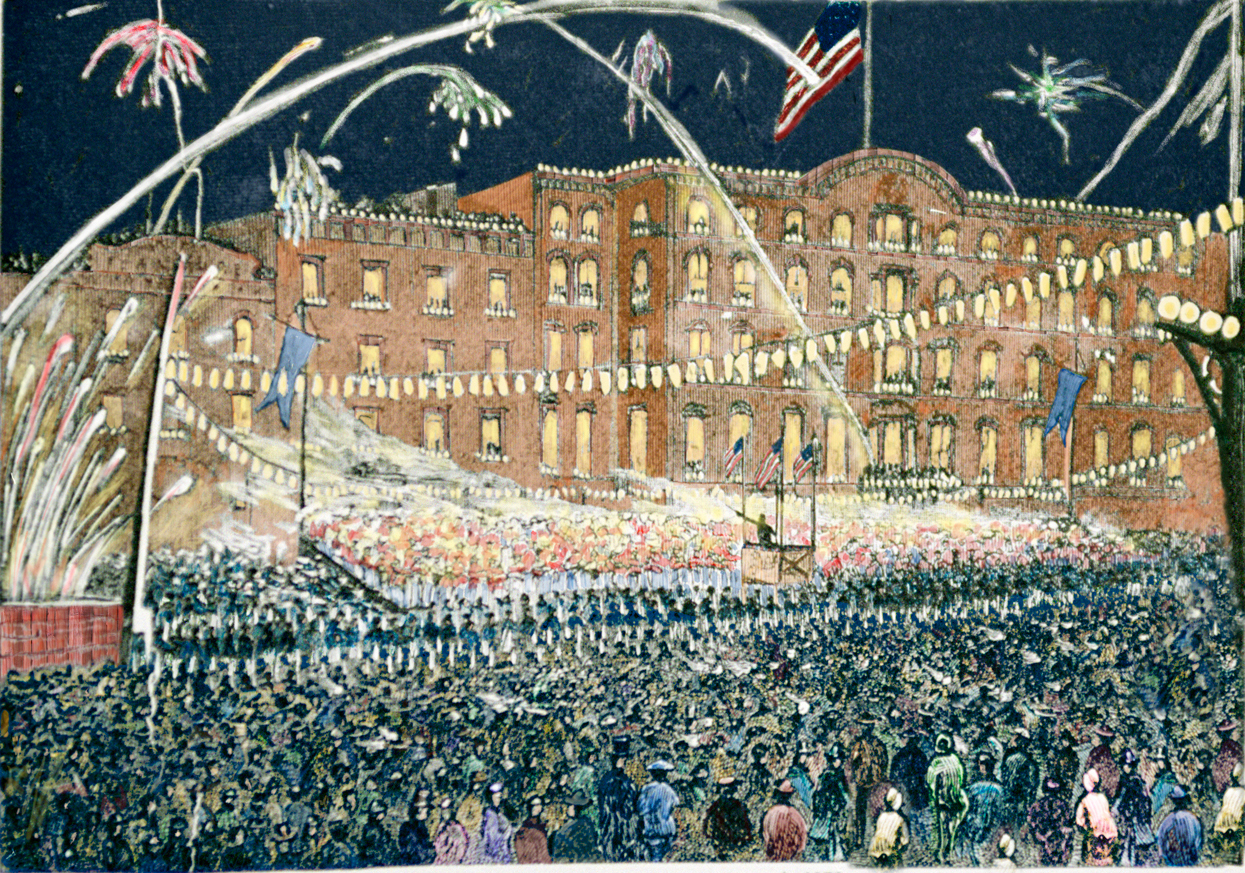Happy 237th Birthday, America
Colorized lithograph of Union Square, New York's celebration on July 4th, 1876
In July 1776, when 56 largely unelected delegates from 12 of 13 rebellious British colonies in North America unanimously declared their political independence from the Kingdom of Great Britain, they gambled everything they had. Their then-illegal revolt, as unprecedented as it was imprudent, succeeded in ways they could scarcely imagine. Today, 237 years later, we continue to celebrate their bold defiance and clarion call.
Now popularly known as the “Fourth of July,” Independence Day officially commemorates the adoption by the brash colonists of their ringing Declaration of Independence -- thus marking the formal, well-reasoned, yet impassioned beginnings of our new country’s birth, in the city of Philadelphia, Commonwealth of Pennsylvania, in the summer of 1776.
Typically, this epochal event is associated with patriotic fireworks, parades, picnics, family reunions, songs, festivals, concerts, and speeches. Such festivities started immediately. According to historian James R. Heintze, one year later, in 1777, after the Declaration and with the fledgling forces of the new “united States of America” engaged in war, the Americans celebrated the “Spirit of ‘76”: “thirteen gunshots were fired in salute, once at morning and once again as evening fell, on July 4 in Bristol, Rhode Island,” and in Philadelphia there was an official dinner for members of the Continental Congress, along with prayers, speeches and music. Along the Delaware River, local ships were outfitted with red, white and blue bunting. The American Revolution was well underway.
On June 11, 1776, Thomas Jefferson and other members of his Committee of Five actually started drafting the words for their Declaration, finishing their initial work on June 28. On July 2, Congress, meeting in closed session, voted to approve the explosive resolution for independence, proposed in June by Richard Henry Lee of Virginia. Members then debated and revised their historic statement explaining their decision, before accepting its final wording on July 4. The stunning, brilliant document, formally engrossed on parchment paper, was signed on August 2, 1776, to be sent to King George III of Great Britain.
On July 3, following their treasonous, heart-stopping vote to defect from the mightiest power in the world, John Adams wrote to his wife Abigail that the day of the vote for independence would be “the most memorable epoch in the history of America. I am apt to believe that it will be celebrated by succeeding generations as the great anniversary festival. It ought to be celebrated as the day of deliverance, by solemn acts of devotion to God Almighty. It ought to be celebrated by pomp and parade, with shows, games, sports, guns, bells, bonfires, and illuminations, from one end of this continent to the other, from this time forward, forever more.” [Adams Family Papers, Massachusetts Historical Society.]
©RIHi.USA, 2013

